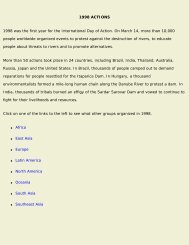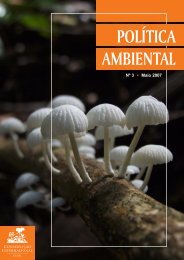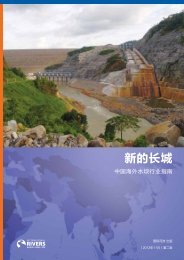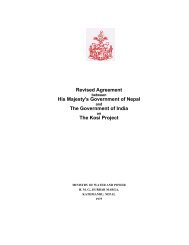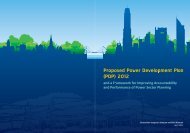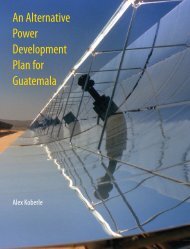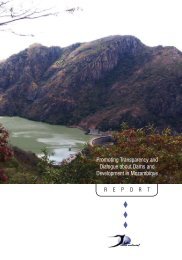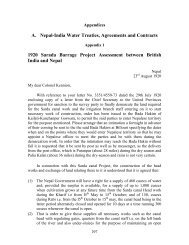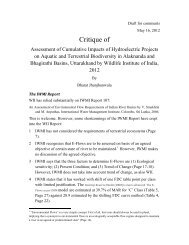Thai-Lao Hydro Projects Should Meet International Standards
Thai-Lao Hydro Projects Should Meet International Standards
Thai-Lao Hydro Projects Should Meet International Standards
Create successful ePaper yourself
Turn your PDF publications into a flip-book with our unique Google optimized e-Paper software.
declines in fish and other aquatic resources, for which the company has paid no<br />
compensation. They have also been forced to abandon their paddy fields due to the<br />
repeated loss of wet season rice crops. The flooding has caused water contamination,<br />
skin diseases, drinking water shortages, death of livestock from drowning and disease,<br />
and other temporary food shortages.<br />
Yet the project’s operators, Statkraft and GMS Power of <strong>Thai</strong>land, are now proposing an<br />
expansion to account for the reduction in flows caused by Nam Theun 2’s development<br />
upstream. The Theun-Hinboun Expansion Project would double the diversion to the Hai<br />
and Hinboun, making life for tens of thousands of people living along those rivers<br />
increasingly intolerable. This new project does not include adequate measures to<br />
mitigate the flooding and erosion problems, nor does it provide compensation to address<br />
villagers’ past – and ongoing – losses.<br />
The Theun-Hinboun Expansion Project is one of the four power purchase agreements<br />
with <strong>Thai</strong>land that are expected to be signed by the end of this year. But it should not go<br />
forward until and unless the Company has resolved the problems with the existing<br />
project. Murray Watson will discuss these issues in more detail.<br />
Another one of these four projects, the Nam Theun 1 dam, would be built downstream<br />
from Nam Theun 2 and Theun-Hinboun, just about 30 kilometers from the Mekong<br />
confluence. This <strong>Thai</strong>-Malaysian dam sponsored by Gamuda and EGCO would be built<br />
in the middle of <strong>Lao</strong>s’ remote Nam Kading National Protected Area, in an area classified<br />
by conservation organizations as one of 35 global biodiversity “hotspots”. Its reservoir<br />
would effectively divide the protected area in two, destroying large swathes of riverine<br />
and terrestrial wildlife habitat. Hunting and poaching pressures are already on the rise;<br />
4




